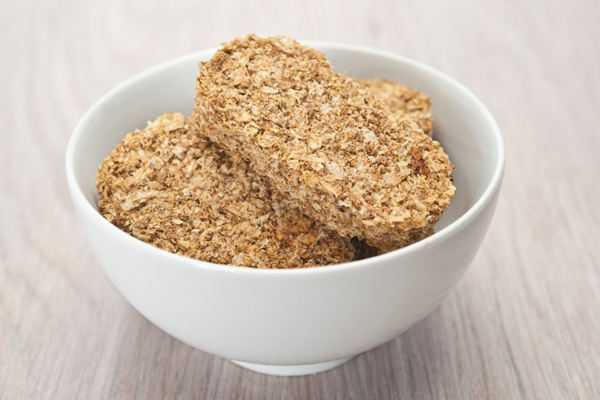Watermelon is a beloved summer fruit, known for its juicy, sweet flesh. But what about the green outer layer that we typically discard? Many people wonder if watermelon skin is edible and if it offers any health benefits. In this article, we'll explore the surprising truth about eating watermelon skin and its potential advantages for your health.
Key takeaways:
• Watermelon skin is edible and contains valuable nutrients
• The rind offers potential health benefits, including improved heart health and exercise performance
• Consuming watermelon skin can help reduce food waste
• There are various ways to incorporate watermelon rind into your diet
The nutritional profile of watermelon skin
Watermelon skin, also known as the rind, is often overlooked but contains a surprising array of nutrients. While not as sweet as the flesh, the rind is rich in vitamins, minerals, and beneficial compounds[1].
Citrulline content: One of the most notable components of watermelon rind is citrulline, an amino acid that has gained attention for its potential health benefits. Citrulline is actually more concentrated in the rind than in the flesh of the watermelon[2].
Fiber and other nutrients: The rind is also a good source of fiber, which is essential for digestive health. Additionally, it contains vitamins A and C, as well as potassium and magnesium[3].
Potential health benefits of eating watermelon skin
Consuming watermelon rind may offer several health advantages due to its unique nutritional profile.
Improved cardiovascular health: The citrulline in watermelon rind may help improve blood flow by promoting the production of nitric oxide in the body. This can potentially lead to better heart health and lower blood pressure[4].
Enhanced exercise performance: Some studies suggest that citrulline may improve exercise performance by reducing fatigue and improving oxygen delivery to muscles[5].
Digestive health: The fiber content in watermelon rind can contribute to better digestive health by promoting regular bowel movements and supporting the growth of beneficial gut bacteria[6].
Antioxidant properties: Watermelon rind contains antioxidants that may help protect cells from damage caused by free radicals, potentially reducing the risk of chronic diseases[7].
How to incorporate watermelon skin into your diet
If you're interested in trying watermelon skin, there are several ways to include it in your diet:
- Pickled watermelon rind: A popular method in the southern United States, pickling watermelon rind creates a tangy, crunchy snack[8].
- Smoothies: Blend watermelon rind with other fruits and vegetables for a nutrient-packed smoothie.
- Stir-fries: Chop the rind into small pieces and add it to stir-fries for extra crunch and nutrition.
- Salads: Thinly slice the rind and add it to salads for a unique texture and flavor.
- Juicing: Include watermelon rind in your juicing recipes to maximize nutrient intake.
Safety considerations and precautions
While watermelon skin is generally safe to eat, there are a few things to keep in mind:
Pesticide exposure: If the watermelon is not organic, the skin may contain pesticide residues. Be sure to wash the watermelon thoroughly before consuming the rind[9].
Digestive sensitivity: Some people may experience digestive discomfort when first introducing watermelon rind into their diet due to its high fiber content. Start with small amounts and gradually increase intake.
Texture and taste: The rind has a different texture and taste compared to the flesh, which may not appeal to everyone. Experimenting with different preparation methods can help make it more palatable.
Reducing food waste through watermelon skin consumption
Eating watermelon skin is not only potentially beneficial for your health but also an excellent way to reduce food waste. By utilizing the entire fruit, you can maximize its nutritional value and minimize environmental impact.
Conclusion:
So, can you eat watermelon skin? The answer is a resounding yes! Not only is watermelon rind edible, but it also offers a range of potential health benefits. From improving cardiovascular health to enhancing exercise performance, the often-discarded rind is worth a second look. By incorporating watermelon skin into your diet, you can boost your nutrient intake while also contributing to food waste reduction efforts.
Share your experiences
Have you tried eating watermelon skin? Share your experiences and favorite recipes in the comments below. And don't forget to subscribe to our newsletter for more surprising health insights and tips!
References:
[1] Rimando, A. M., & Perkins-Veazie, P. M. (2005). Determination of citrulline in watermelon rind. Journal of Chromatography A, 1078(1-2), 196-200.
[2] Tarazona-Díaz, M. P., Alacid, F., Carrasco, M., Martínez, I., & Aguayo, E. (2013). Watermelon juice: potential functional drink for sore muscle relief in athletes. Journal of Agricultural and Food Chemistry, 61(31), 7522-7528.
[3] Erhirhie, E. O., & Ekene, N. E. (2013). Medicinal values on Citrullus lanatus (Watermelon): Pharmacological review. International Journal of Research in Pharmaceutical and Biomedical Sciences, 4(4), 1305-1312.
[4] Figueroa, A., Wong, A., Hooshmand, S., & Sanchez-Gonzalez, M. A. (2013). Effects of watermelon supplementation on aortic blood pressure and wave reflection in individuals with prehypertension: a pilot study. American Journal of Hypertension, 26(3), 382-387.
[5] Pérez-Guisado, J., & Jakeman, P. M. (2010). Citrulline malate enhances athletic anaerobic performance and relieves muscle soreness. The Journal of Strength & Conditioning Research, 24(5), 1215-1222.
[6] Slavin, J. (2013). Fiber and prebiotics: mechanisms and health benefits. Nutrients, 5(4), 1417-1435.
[7] Tlili, I., Hdider, C., Lenucci, M. S., Ilahy, R., Jebari, H., & Dalessandro, G. (2011). Bioactive compounds and antioxidant activities of different watermelon (Citrullus lanatus (Thunb.) Mansfeld) cultivars as affected by fruit sampling area. Journal of Food Composition and Analysis, 24(3), 307-314.
[8] Egbuonu, A. C. C. (2015). Comparative investigation of the proximate and functional properties of watermelon (Citrullus lanatus) rind and seed. Research Journal of Environmental Toxicology, 9(3), 160-167.
[9] Lozowicka, B., Jankowska, M., Hrynko, I., & Kaczynski, P. (2016). Removal of 16 pesticide residues from strawberries by washing with tap and ozone water, ultrasonic cleaning and boiling. Environmental Monitoring and Assessment, 188(1), 51.
Citations:
[1] https://www.healthshots.com/healthy-eating/nutrition/watermelon-rind
[2] https://www.vedantu.com/evs/uses-of-watermelon-rind
[3] https://www.healthline.com/health/food-nutrition/watermelon-rind-benefits
[4] https://www.nwhealth.edu/news/11-top-watermelon-health-benefits/
[5] https://green-travel-blog.com/green_pearls_insighs/watermelon-rind-benefits/
[6] https://thefitfork.com/cinnamon-churro-watermelon-rind-fries-ways-to-use-the-whole-watermelon/
[8] https://faithfueledmoms.com/why-is-the-watermelon-rind-so-good-for-you/













Member discussion